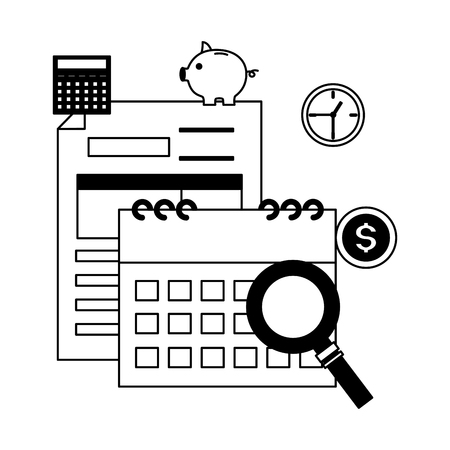Understanding Stamp Duty: The Basics
If you’re thinking about buying your first home in the UK, one of the first things you’ll hear about is Stamp Duty Land Tax, or SDLT for short. But what exactly is it? Basically, SDLT is a tax you pay to the government when you purchase property or land over a certain price in England and Northern Ireland. It’s one of those costs that can catch people off guard, especially if you’re new to the property scene.
SDLT kicks in when you buy a residential property costing more than £250,000 (as of 2024). If you’re buying your very first home, there are sometimes reliefs that mean you might pay less – but most buyers still need to factor this into their budget. The tax applies whether you’re snapping up a flat in London or a cosy cottage in Yorkshire.
So why is Stamp Duty such a big deal? Well, it’s often one of the largest upfront costs after your deposit. While it might seem like just another bit of paperwork, the amount can run into thousands of pounds depending on how much your dream home costs. That’s why understanding how SDLT works is so important for anyone looking to get onto the UK property ladder.
2. How Much Will You Pay? Stamp Duty Rates and Calculations
So, let’s talk numbers! Stamp Duty Land Tax (SDLT) can feel a bit daunting at first glance, but it’s actually pretty straightforward once you break it down. In the UK, how much Stamp Duty you pay depends mainly on the price of the property you’re buying and whether you’re a first-time buyer or not. The government sets different “brackets” – think of these as bands where each portion of your property price is taxed at a different rate.
Current Stamp Duty Brackets for Residential Properties
| Property Price | Standard Buyer Rate | First-Time Buyer Rate |
|---|---|---|
| Up to £250,000 | 0% | 0% (up to £425,000) |
| £250,001 – £925,000 | 5% | 5% (on £425,001 – £625,000) |
| £925,001 – £1.5 million | 10% | N/A |
| Over £1.5 million | 12% | N/A |
A Quick Example: Standard Buyer in Manchester
If you buy a house in Manchester for £300,000 as a non–first-time buyer:
- No tax on the first £250,000 = £0
- 5% on the next £50,000 (£300,000 – £250,000) = £2,500
- Total Stamp Duty = £2,500
A Quick Example: First-Time Buyer in Birmingham
If you buy your first home in Birmingham for £350,000:
- No tax on the first £425,000 = £0 (since the property is under this threshold)
- Total Stamp Duty = £0
A Few Things to Note:
- If you buy a second home or a buy-to-let property, there’s an extra 3% surcharge on top of these rates.
- The rules can change if you’re buying in Scotland or Wales – there are different systems there!
- If your purchase price goes over certain thresholds (like over £425,000 for first-time buyers), you may lose some reliefs.

3. Other Essential Property Buying Costs
So, you’ve wrapped your head around Stamp Duty – but that’s just one piece of the puzzle! When buying a home in the UK, there are several other key costs you’ll need to budget for. Let’s break down the main ones, so there are no nasty surprises along the way.
Solicitor’s Fees
First up: solicitor’s or conveyancer’s fees. These legal professionals handle all the paperwork and checks to make sure the property can legally be yours. The cost usually ranges from £800 to £1,500, depending on how complicated the purchase is. Some solicitors might offer a fixed fee, while others charge by the hour – always ask for a quote upfront!
Survey Costs
Getting a survey done on your potential new home is highly recommended (even if not strictly required). There are different types, from a basic HomeBuyer Report to a full Building Survey. Prices typically start at about £400 and can go over £1,000 for older or larger properties. This could save you money in the long run by flagging any hidden problems.
Mortgage Application Charges
If you’re taking out a mortgage, lenders often charge arrangement fees – sometimes called booking fees or product fees. These can be anywhere from £0 to £2,000 depending on the deal. Some lenders let you add this to your mortgage (meaning you pay interest on it), while others want it paid up front.
Removal Van Hire
The final step: moving in! Unless you fancy carting everything yourself, hiring a removal van or professional movers is common practice here in the UK. Prices vary widely, but for most moves expect to pay between £300 and £1,000 depending on how much stuff you have and how far you’re going.
Don’t forget – these extras can really add up, so always factor them into your overall property budget. Being prepared means less stress and more excitement when you finally get those keys!
4. Regional Variations: Scotland and Wales
If you’re thinking about buying property in the UK, it’s important to know that not all regions follow the same rules when it comes to property taxes. While most of England and Northern Ireland use Stamp Duty Land Tax (SDLT), Scotland and Wales have their own versions with slightly different names and thresholds. Let’s take a quick tour through these variations so you don’t get caught out!
Scotland: Land and Buildings Transaction Tax (LBTT)
In Scotland, buyers pay Land and Buildings Transaction Tax (LBTT) instead of SDLT. LBTT has its own bands and rates, which means the amount you pay can be quite different from what you’d pay in England. If this is your first time buying up north, here’s a handy table to help you compare:
| Price Bracket (£) | LBTT Rate (%) |
|---|---|
| Up to £145,000 | 0% |
| £145,001 – £250,000 | 2% |
| £250,001 – £325,000 | 5% |
| £325,001 – £750,000 | 10% |
| Over £750,000 | 12% |
If you’re a first-time buyer in Scotland, there’s some good news: you’ll pay 0% LBTT on properties up to £175,000. So make sure to check if you qualify for this relief!
Wales: Land Transaction Tax (LTT)
Over in Wales, they have the Land Transaction Tax (LTT), which also comes with its own set of bands. Here’s how it stacks up:
| Price Bracket (£) | LTT Rate (%) |
|---|---|
| Up to £225,000 | 0% |
| £225,001 – £400,000 | 6% |
| £400,001 – £750,000 | 7.5% |
| £750,001 – £1.5m | 10% |
| Over £1.5m | 12% |
No matter where you buy in the UK, make sure you double-check which tax applies. The differences between LBTT and LTT versus SDLT can mean big changes in your upfront costs—and could even influence where you decide to buy!
5. Tips for Saving Money on Property Purchase Costs
Buying a home in the UK can feel like an expensive maze, but there are practical ways to keep those extra costs in check. Here’s some down-to-earth advice to help you save some pounds along the way.
Shop Around and Find Deals
Don’t just settle for the first mortgage offer or solicitor you come across. Take your time to compare lenders, look at interest rates, and watch out for special deals (like cashback offers or free valuations). The same goes for surveyors and conveyancers—getting multiple quotes could save you hundreds of pounds.
Negotiate Fees Where You Can
It might feel awkward, but it never hurts to ask if fees are negotiable. Estate agents, solicitors, and even removal companies sometimes have wiggle room. A polite conversation could shave off some of those pesky admin charges or get you a better rate—especially if you’re a first-time buyer or chain-free.
Take Advantage of Government Schemes
The government offers several schemes to make buying property more affordable. For example, First-time buyers may benefit from Stamp Duty relief, while Help to Buy ISAs and Lifetime ISAs offer savings boosts. Shared Ownership is another option worth exploring if you’re struggling with deposit size or mortgage approval.
Look Out for Incentives from Developers
If you’re considering a new build, developers often throw in extras like paying your Stamp Duty or covering legal fees as part of their sales package. Always ask what’s on offer—it could make a real difference to your budget.
Be Smart with Your Budget
Factor in all possible costs before making an offer so you won’t be caught off guard. If something feels too expensive, don’t be afraid to walk away—there’s always another home around the corner. With some savvy planning and a bit of negotiation, you can make your dream home more affordable than you might think!
6. Planning Ahead: Budgeting for Your Home Purchase
Let’s be honest—buying a home in the UK is so much more than just saving up for your deposit. Between stamp duty, solicitors’ fees, surveys, and moving costs, it’s easy to lose track of where your money’s going. But with a little planning and the right tools, you can create a realistic budget that helps avoid nasty surprises down the line.
Know Every Cost Up Front
First off, make a list of all the fees you’ll likely face. Besides your deposit, factor in stamp duty (use an online calculator to get an accurate figure), legal fees, mortgage arrangement charges, valuation and survey costs, removal services, and even things like buildings insurance or initial council tax payments. Don’t forget smaller expenses like post redirection or new locks—they add up!
Use Helpful Tools
There are loads of free online budget planners designed for UK homebuyers. Sites like MoneyHelper and Which? offer step-by-step guides and calculators tailored to British property purchases. Pop in your numbers and these tools will help you spot any shortfalls or extra wiggle room in your plan.
Set Aside a Contingency Fund
No matter how carefully you plan, unexpected costs can crop up—maybe your survey uncovers an issue or you need to pay for urgent repairs. Aim to have a contingency fund (5-10% of your purchase price is sensible) so you’re not caught off guard.
Keep Reviewing Your Budget
Your budget shouldn’t be set in stone. Keep updating it as you get quotes from solicitors or removal companies, or if interest rates change before you lock in a mortgage deal. This way, you’ll always know exactly where you stand financially throughout the process.
In short, setting up a thorough budget is one of the best ways to keep stress at bay when navigating all the hidden and expected costs of buying property in the UK. With the right prep work (and maybe a few strong cups of tea), you’ll be ready for whatever comes your way on your home-buying journey!


